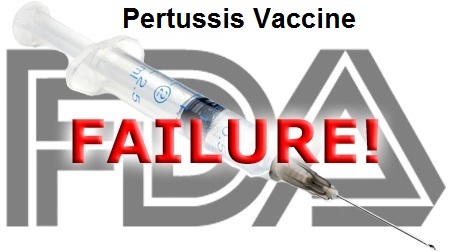Whooping Cough Outbreaks Traced Back to Vaccine Failure
The pertussis (whooping cough) vaccine is included as a component in "combination" shots that include tetanus and diphtheria (DPT, DTaP, Tdap) and some pertussis-containing shots now also include polio, hepatitis B and/or Haemophilus Influenza B (Hib). Whole cell pertussis vaccines in DPT, used in the U.S. from 1949 until the late ‘90s, were estimated to be between 30 and 85 percent effective, depending upon the type of DPT and vaccine manufacturer, with protection lasting only two to five years. The DPT vaccine was highly reactive and carried a high risk of serious allergic reactions and brain inflammation leading to permanent brain damage, as detailed in the groundbreaking 1985 book DPT: A Shot in the Dark, co-authored by Barbara Loe Fisher, cofounder of the National Vaccine Information Center. DTaP shots — which contain the less reactive acellular pertussis vaccine licensed for infants in the United States in 1996 — are given five times to children under age 6, with additional Tdap booster doses recommended for teenagers and adults. Since the late 1980s, CDC data shows that kindergarten children in the U.S. have maintained a high vaccination rate with four to five DPT shots and, today, more than 94 percent of kindergarten children have had four to five acellular DTaP vaccines. Very high pertussis vaccination rates in the U.S. and many other countries for the past several decades should be more than sufficient to achieve vaccine-acquired herd immunity, if the theory of vaccine-acquired herd immunity is correct. Yet, despite high vaccine coverage, statistics show reported whooping cough cases continue to rise. So, what’s really going on?



